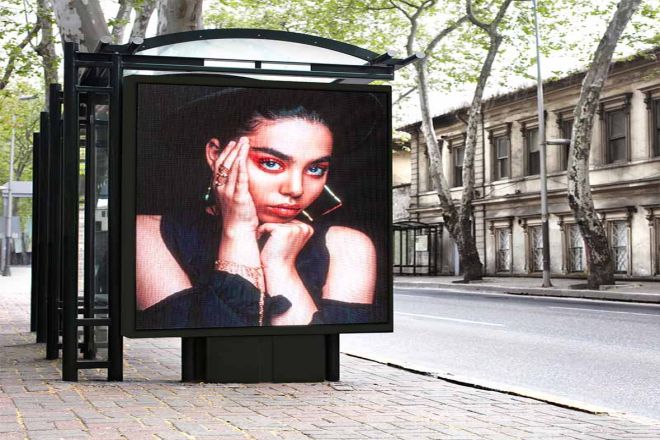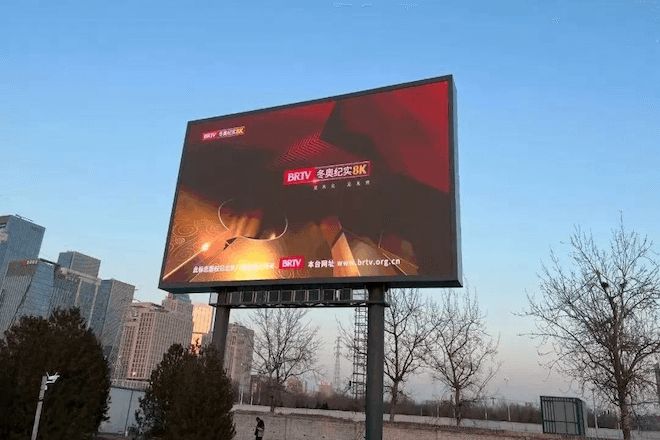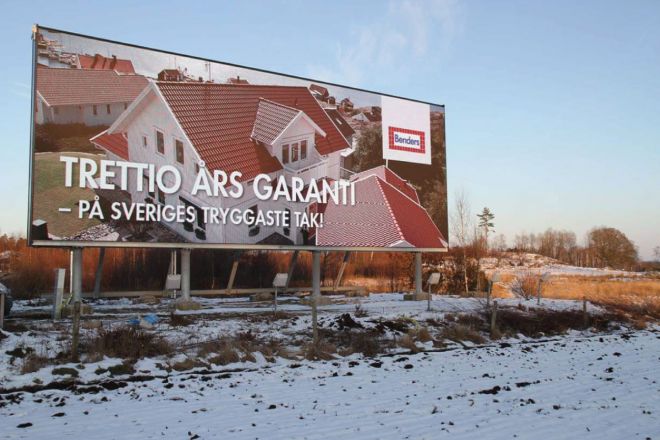Introduction

Imagine, when the rain is pouring, the sun is scorching, and the wind is raging, can your outdoor LED screen still shine and convey information as usual?
In this unpredictable climate era, every extreme weather is a severe test for the stable operation of LED screens. But don’t worry, this article is your “protection guide”!
We know that as a manager or maintainer of LED screens, you are eager to find simple and effective strategies to deal with various bad weather and ensure the safety and performance of the screen.
Therefore, this article directly cuts to the point and reveals a series of practical tips and strategies for you to be calm in the face of bad weather and ensure that LED screens continue to add luster to urban life.
1. Tips for waterproofing and moisture-proofing of LED screens

The tips you mentioned for waterproofing and moisture-proofing LED screens are very practical. Here are some additional suggestions to help better protect LED screens from moisture and water:
1). Choose a suitable installation location:
When installing LED screens, try to choose a location that is sheltered from rain, wind and well ventilated. Avoid installing the display screen directly in areas that are humid or prone to water accumulation, such as low-lying areas or rain-splashed areas of buildings.
2). Use waterproof coatings or materials:
On the outer shell and internal circuit boards of the display screen, you can consider using waterproof coatings or materials to increase its waterproof performance. These coatings or materials can effectively block moisture penetration and protect internal components from damage.
3). Regular inspection and maintenance:
In addition to the sealing inspection, the waterproof facilities of the display screen should be checked regularly to see if they are intact, such as waterproof seals, waterproof glue, etc. Once aging or damage is found, it should be replaced in time to ensure the waterproof effect.
4). Strengthen ventilation and heat dissipation:
Although moisture-proof materials can help absorb moisture, an overly humid environment may also affect the heat dissipation performance of the display screen.
Therefore, during installation and use, ensure that there is enough ventilation space around the display screen to dissipate heat in time and reduce the impact of humidity on the display screen.
5). Use an intelligent monitoring system:
Installing an intelligent monitoring system can monitor the operating status of the display screen and the surrounding environmental conditions, including humidity, temperature, etc., in real time.
Once an abnormality is found, the system can automatically alarm and take corresponding protective measures, such as starting dehumidification equipment.
6). Reasonable design of drainage system:
Design a reasonable drainage system around the display screen to ensure that rainwater or other water sources can be quickly drained away to avoid water accumulation and damage to the display screen.
At the same time, it is also necessary to ensure that the drainage system will not be blocked or backflow, affecting the normal use of the display screen.
7). Train operators:
Train operators to let them understand the waterproof and moisture-proof requirements and maintenance methods of the display screen. This ensures that during daily use, operators can operate in accordance with specifications and reduce waterproof and moisture-proof problems caused by human factors.
2. Tips for high temperature and sun protection of LED display screens
Tips for high temperature and sun protection of LED display screens mainly include the following aspects:
1). Sunshade and reflection
- Sunshade or reflector:
Use a movable sunshade or reflector to provide an additional sunshade effect for the screen without affecting the viewing angle and display effect.
This can effectively reduce the time that the sun shines directly on the screen, thereby reducing the screen temperature and protecting the internal components from high-temperature damage.
- Sunshade rack design:
When installing the display screen, you can consider designing a sunshade rack to reduce direct sunlight by physical blocking while maintaining air circulation, which helps to dissipate heat.
2). Cooling system optimization
- Nighttime cooling:
Use the cool time at night to turn on the low brightness mode of the screen or perform automatic testing, which not only helps the cooling system to discharge the heat accumulated during the day, but also extends the service life of the display to a certain extent.
- Efficient cooling equipment:
Install efficient fans, cooling fins or other cooling equipment inside the display to increase the cooling area and improve the cooling efficiency. These devices can quickly take away the heat in a high temperature environment and maintain the normal working temperature of the display.
3). Temperature monitoring and early warning
- Temperature monitoring software:
Use mobile phone APP or other remote monitoring software to monitor the temperature changes of the display in real time. These software usually have a high temperature early warning function. Once the temperature is abnormally increased, the management personnel can be notified immediately to take measures.
- Regular inspections:
In addition to remote monitoring, the display should be inspected regularly to check whether the cooling equipment is operating normally and whether there are other factors that may cause the temperature to rise.
4). Application of sunscreen materials
- Sunscreen coating:
Applying a sunscreen coating on the surface of the display can effectively reduce the impact of solar radiation on the display and reduce heat absorption and accumulation.
- Sunscreen material selection:
When designing and installing the display screen, choose materials with good sunscreen performance, such as anti-ultraviolet glass, sunscreen film, etc., to improve the high-temperature resistance and sunscreen ability of the display screen.
5). Daily maintenance and care
- Regular cleaning:
Regularly clean the dust and dirt on the surface and inside of the display screen to keep the heat dissipation channel unobstructed, which helps to improve the heat dissipation efficiency.
- Waterproof and moisture-proof:
Although the main discussion here is high-temperature resistance and sunscreen, waterproof and moisture-proof are also important measures to protect the display screen from damage in high temperature and humid environments. The waterproof sealing performance of the display screen should be checked regularly to ensure that there is no leakage or seepage.
3. Tips for low-temperature protection of LED display

For the protection of LED displays in low-temperature environments, the following are some practical tips:
1). Preheating start
- Preheating in advance:
In cold weather, especially when the ambient temperature is close to or lower than the minimum operating temperature of the display, the preheating function of the screen should be turned on in advance.
This helps to ensure that the internal components of the display are operating at normal operating temperature and avoid startup difficulties or performance degradation due to low temperature.
- Auxiliary heating:
If the display does not have a built-in preheating function, you can consider using auxiliary equipment such as a small heating pad or heater to heat the display.
However, it should be noted that the heating equipment should be kept at an appropriate distance from the display to avoid damage caused by overheating.
2). Adding insulation layer
- Adding insulation materials:
Add insulation materials (such as foam boards, insulation cotton, etc.) to the back or around the display to reduce heat loss. These insulation materials have good thermal insulation properties, which can improve the insulation effect of the display to a certain extent, so that it can still maintain normal operating temperature in low temperature environments.
- Sealing treatment:
In addition to adding insulation materials, the joints and openings of the display should also be sealed to prevent cold air intrusion and heat loss. This can be achieved by using materials such as sealants and sealing strips.
3). Ice warning and protection
- Install temperature sensors:
Install temperature sensors inside or around the display screen to monitor the ambient temperature in real time. By setting the ice warning value (such as -5℃, -10℃, etc.), once the ambient temperature reaches or falls below this value, the warning system is immediately triggered.
- Take protective measures:
When receiving an ice warning signal, measures should be taken immediately to prevent the display screen from freezing. This can include turning on heating equipment, closing unnecessary vents, adding insulation layers, etc.
At the same time, it is also necessary to regularly check whether the drainage system of the display screen is unobstructed to prevent the accumulation of water and ice from damaging the display screen.
4). Low-temperature resistant components and materials
- Select low-temperature resistant components:
When designing and manufacturing display screens, low-temperature resistant components and materials should be selected.
These components and materials can still maintain good performance and stability in low-temperature environments, thereby ensuring the normal operation of the display screen.
- Low temperature resistance test:
Before the display screen leaves the factory, a strict low temperature resistance test should be carried out. By simulating the working conditions in a low temperature environment, the low temperature resistance and reliability of the display screen are tested.
5). Daily maintenance and inspection
- Regular inspection:
Regularly maintain and inspect the display screen, including checking whether the insulation layer is intact, whether the temperature sensor is accurate, whether the heating equipment is working properly, etc.
This helps to find and solve problems in a timely manner and ensure the stable operation of the display screen in a low-temperature environment.
- Train operators:
Train operators to let them understand the protection requirements and operation methods of the display screen in a low-temperature environment.
This ensures that during daily use, operators can operate in accordance with the specifications and reduce low-temperature damage caused by human factors.
4. Tips for LED display screens to resist wind and sand
In response to the challenges of LED display screens facing wind and sand in outdoor environments, the following are some practical tips:
1). Tightening inspection and maintenance
- Regular inspection:
Regularly check the brackets, fixing screws, and connecting parts of the LED display screen to ensure that all parts are tightened in place and there is no looseness. This can effectively prevent the display screen from shaking or being damaged due to unstable structure in strong wind weather.
- Reinforcement measures:
For display screens installed in areas with strong winds, additional reinforcement measures can be considered, such as adding support rods, reinforcing angle steel, etc., to improve the overall wind resistance.
2). Dust screen and cleaning
- Dust screen modification:
Install a finer dust screen at the air inlet of the display screen to block the entry of tiny particles such as sand and dust.
At the same time, regularly check and clean the dust screen to ensure that it remains clean and unobstructed to avoid blockage and affect the heat dissipation effect.
- Daily cleaning:
In addition to the dust screen, the surface of the display screen should be cleaned regularly to remove attached sand and dirt to maintain the clarity and heat dissipation performance of the display screen.
3). Wind direction and orientation adjustment
- Wind direction observation:
Pay attention to the wind direction information in the weather forecast, especially before the arrival of severe weather such as sandstorms, adjust the direction of the display screen in advance or add a wind shield.
Through reasonable direction selection and wind shielding measures, the direct impact of wind and sand on the display screen can be reduced.
- Intelligent adjustment:
If conditions permit, you can consider installing an intelligent wind direction sensing system to automatically adjust the direction of the display screen or open the windshield according to real-time wind direction data to achieve a more accurate protection effect.
4). Material and structural design
- Select wind-resistant materials:
In the manufacturing process of the display screen, materials with high strength and good wind resistance, such as stainless steel, aluminum alloy, etc., should be selected. These materials not only have good wind resistance but also can maintain a long service life in harsh environments.
- Optimize structural design:
Improve the overall strength and stability of the display screen through reasonable mechanical analysis and structural design. For example, a stable frame structure and a reasonable support point layout are used to reduce the impact of wind pressure on the display screen.
5). Comprehensive protection measures
- Integrated wiring:
Rationally plan the wiring scheme of the display screen to avoid cables being exposed to the outside and eroded by wind and sand.
At the same time, cables and connectors with high waterproof and dustproof grades should be used to ensure the stability and reliability of signal transmission.
- Lightning protection grounding:
In areas where lightning is frequent, lightning protection grounding of the display screen should be done well. Install lightning protection equipment such as lightning rods, and regularly check the effectiveness of the grounding system to ensure the safety of the display screen in thunder and lightning weather.
5. Tips for daily maintenance of LED display screens
Daily maintenance of LED display screens is essential to ensure its normal operation and extend its service life. Here are some tips for daily maintenance of LED display screens:
1). Cleaning and maintenance
- Regular cleaning:
The surface of the LED display screen is prone to accumulate dust, dirt, and traces of rain, which will affect the display effect and brightness. Therefore, the screen surface should be gently wiped with a soft, dry cloth or a special cleaner regularly to remove debris and dirt. Be careful to avoid using detergents containing alcohol to avoid damaging the screen surface.
- Environmental cleaning:
In addition to the screen surface, the environment around the display screen should also be cleaned regularly to ensure that there is no debris and dust around it and to prevent it from entering the inside of the display screen.
2). Spare parts reserve
- Spare parts preparation:
prepare some commonly used spare parts, such as fuses, bulbs (if traditional bulbs are used as backlight sources, modern LED displays usually use LED lamp beads), connecting wires, etc. These spare parts can be quickly replaced when the display fails or needs to be replaced, reducing downtime.
3). Documentation
- Establish maintenance records:
Establish detailed maintenance record documents to record the time, content, results, problems found, and solutions for each maintenance. This helps with subsequent reference and analysis to understand the maintenance history and performance changes of the display.
4). Regular inspection and testing
- Connection line inspection:
Regularly check the connection lines of the LED display, including power lines, signal lines and connectors, to ensure that the connection is firm and not loose. If loose or damaged lines are found, they should be repaired or replaced in time.
- Functional testing:
Regularly perform functional tests on the display to check whether the display effect, brightness, color, etc. are normal. At the same time, check whether the cooling system of the display is running well to avoid damage due to overheating.
Conclusion
In summary, in the face of the challenges of severe weather, the stable operation of outdoor LED large screens is inseparable from scientific protection strategies and meticulous daily maintenance.
By enhancing the ability to waterproof and moisture-proof, high-temperature and sun protection, wind, and sand resistance, and low-temperature protection, we can significantly improve the durability and adaptability of the large screen, ensuring that it can still show the best visual effects in various extreme weather conditions.
At the same time, establishing a complete emergency plan and training system and improving the professional skills and emergency response capabilities of maintenance personnel are also indispensable parts of ensuring the long-term stable operation of the large screen.
Finally, if you want to know more about LED display screens, please get in touch with us.
